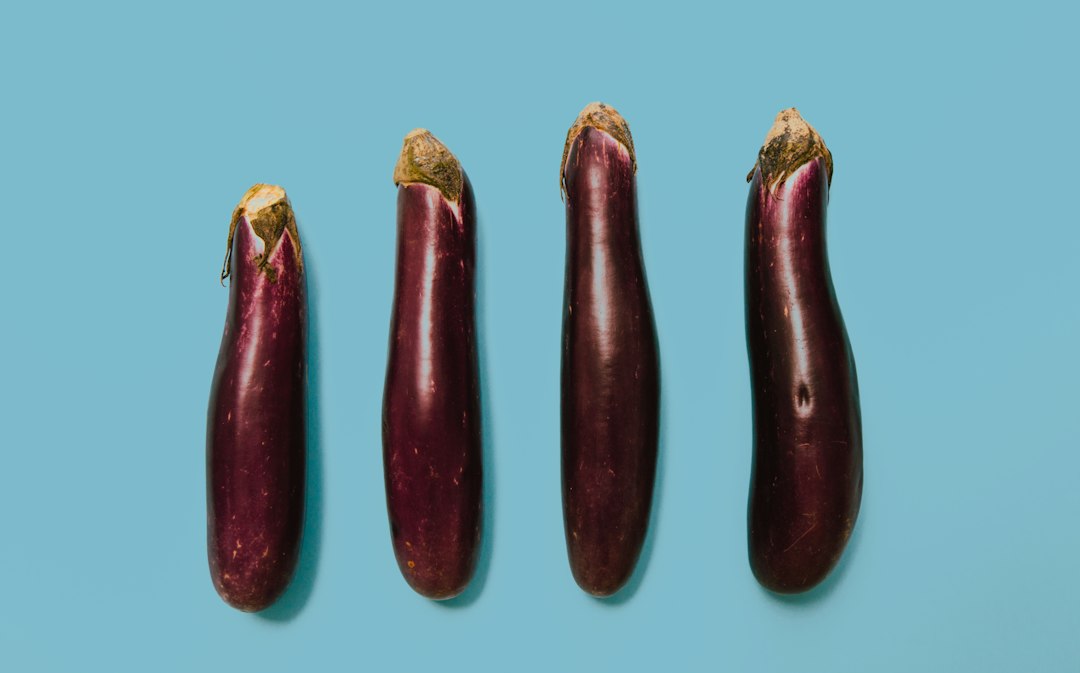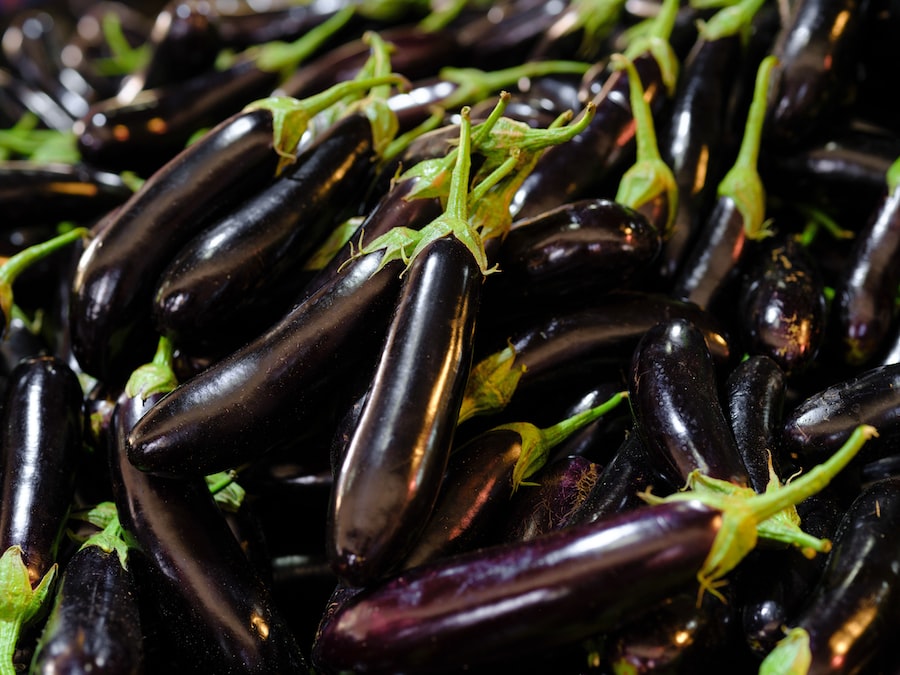Harvesting Eggplants: How to Tell When They’re Ripe and Ready to Pick

Eggplants, also known as aubergines, are a popular vegetable in many cuisines around the world. They are known for their unique shape and vibrant purple color, although there are also varieties that come in different colors such as white and green. Eggplants are a warm-season crop that requires a long growing season to reach maturity. In this article, we will explore the growth cycle of eggplants, the importance of timing in harvesting, how to determine if an eggplant is ripe, techniques for checking ripeness, and best practices for harvesting and post-harvest handling.
Key Takeaways
- Eggplants grow best in warm temperatures and require consistent watering
- Timing is crucial when harvesting eggplants to ensure optimal flavor and texture
- Ripe eggplants should have a shiny, smooth skin and feel heavy for their size
- To check for ripeness, gently press the skin with your thumb and look for a slight indentation
- Use sharp pruning shears or a knife to harvest eggplants and avoid damaging the plant
- Sort and clean harvested eggplants before storing them in a cool, dry place
- Avoid common mistakes like harvesting too early or leaving eggplants on the plant for too long
- Different eggplant varieties may require different harvesting strategies to maximize yield
- Harvest eggplants when they are fully ripe for the best flavor and nutritional value
Understanding Eggplant Growth and Maturity
Eggplants go through several stages of growth and development before they are ready to be harvested. The first stage is the seedling stage, where the eggplant seed germinates and develops into a small plant with true leaves. This stage usually lasts for about 2-3 weeks. The next stage is the vegetative stage, where the plant grows larger and develops more leaves. During this stage, the plant focuses on building its root system and foliage.
After the vegetative stage, the eggplant enters the flowering stage. This is when the plant starts producing flowers, which will eventually turn into fruit. The flowers are usually purple or white in color and have a unique shape. Once the flowers are pollinated, they will start to develop into fruit. The fruit will go through several stages of growth before it reaches maturity.
Factors such as temperature, sunlight, water, and nutrients can affect the maturity of eggplants. Eggplants thrive in warm temperatures between 70-85°F (21-29°C) and require at least 6-8 hours of direct sunlight per day. Adequate water and nutrient supply are also important for healthy growth and fruit development.
The Importance of Timing in Eggplant Harvesting
Timing is crucial when it comes to harvesting eggplants. Harvesting too early or too late can have consequences on the quality and taste of the fruit. Harvesting too early can result in underdeveloped fruit that lacks flavor and has a bitter taste. On the other hand, harvesting too late can lead to overripe fruit that is mushy and has a dull color.
Harvesting at the right time ensures that the eggplants are at their peak flavor and texture. It also allows for a longer shelf life and better storage quality. Additionally, harvesting at the right time promotes continuous fruit production, as the plant will continue to produce new fruit if the mature ones are harvested promptly.
Signs of Ripe Eggplants: Color, Size, and Texture
| Signs of Ripe Eggplants | Color | Size | Texture |
|---|---|---|---|
| Indicator | Purple or dark color | Medium to large | Firm and smooth |
| Unripe | Green or white | Small | Hard and shiny |
| Overripe | Brown or yellow | Large and soft | Wrinkled and mushy |
There are several visual cues that can help determine if an eggplant is ripe and ready to be harvested. The color of the eggplant is one of the most important indicators. Ripe eggplants should have a deep, glossy color that is consistent throughout the fruit. For purple varieties, this color is usually a dark purple or black. For white or green varieties, the color should be vibrant and uniform.
Size is another factor to consider when determining ripeness. Most eggplants reach their optimal size when they are around 6-8 inches long. However, this can vary depending on the variety. It’s important to refer to the specific variety’s recommended size for harvesting.
Texture is also an important indicator of ripeness. Ripe eggplants should feel firm but slightly springy when gently pressed with your finger. Avoid eggplants that feel too soft or mushy, as this can indicate overripeness.
How to Check Eggplants for Ripeness
There are a few techniques you can use to check if an eggplant is ripe without damaging the plant. One method is to gently press your thumb against the skin of the eggplant. If it leaves an indentation that bounces back slightly, the eggplant is likely ripe. If the indentation remains, the eggplant may be overripe.
Another method is to check the color and shine of the eggplant. Ripe eggplants should have a vibrant color and a glossy appearance. Dull or faded skin can indicate that the eggplant is not yet ripe.
You can also check the stem of the eggplant. If it is green and firm, the eggplant is likely still growing and not yet ripe. However, if the stem is brown and dry, it is a sign that the eggplant is mature and ready to be harvested.
Harvesting Eggplants: Tools and Techniques

When it comes to harvesting eggplants, it’s important to have the right tools and techniques to ensure a successful harvest. One essential tool for harvesting eggplants is a sharp knife or pair of pruning shears. This will allow you to cut the stem cleanly without damaging the plant.
To harvest an eggplant, hold the fruit in one hand and use your other hand to cut the stem about an inch above the fruit. Be careful not to twist or pull on the fruit, as this can damage the plant and potentially break off other fruit or flowers.
It’s also important to wear gloves when harvesting eggplants, as some varieties have spines on their stems that can cause skin irritation. Gloves will protect your hands from any potential discomfort.
Tips for Picking Eggplants Without Damaging the Plant
To pick eggplants without damaging the plant, it’s important to follow some best practices. First, avoid stepping on or leaning against the plants while harvesting. This can cause damage to the stems or branches, which can affect future fruit production.
When cutting the stem, make sure to use a clean, sharp tool to ensure a clean cut. This will minimize damage to the plant and reduce the risk of introducing diseases or pests.
It’s also important to handle the eggplants with care to avoid bruising or damaging the fruit. Place them gently in a basket or container, making sure not to stack them on top of each other.
Post-Harvest Handling: Sorting, Cleaning, and Storing Eggplants
After harvesting, it’s important to handle the eggplants properly to maintain their freshness and quality. Start by sorting the eggplants based on size and ripeness. This will make it easier to use them in recipes or store them accordingly.
Next, clean the eggplants by gently wiping off any dirt or debris with a damp cloth. Avoid washing them with water, as this can make them more prone to spoilage.
To store eggplants, place them in a cool, dry place away from direct sunlight. They can be stored at room temperature for a few days, but for longer storage, it’s best to keep them in the refrigerator. Wrap each eggplant individually in a paper towel or place them in a perforated plastic bag to prevent moisture buildup.
Common Mistakes to Avoid When Harvesting Eggplants
There are several common mistakes that can affect eggplant yield and quality. One common mistake is harvesting too early or too late. As mentioned earlier, harvesting at the right time is crucial for optimal flavor and texture. Harvesting too early can result in underdeveloped fruit, while harvesting too late can lead to overripe fruit.
Another mistake is not properly supporting the plant as it grows. Eggplants can become heavy with fruit, and without proper support, the branches can break under the weight. Use stakes or cages to support the plant and prevent damage.
Overwatering is another mistake that can affect eggplant growth and yield. While eggplants require regular watering, overwatering can lead to root rot and other diseases. It’s important to provide adequate water without saturating the soil.
Maximizing Eggplant Yield: Harvesting Strategies for Different Varieties
Different varieties of eggplants may have different growth habits and fruiting patterns. It’s important to adjust your harvesting techniques accordingly to maximize yield. For determinate varieties, which produce a set number of fruit per plant, it’s best to harvest all the fruit at once when they are ripe. This will allow the plant to focus its energy on producing new fruit.
For indeterminate varieties, which continue to produce fruit throughout the growing season, it’s best to harvest the fruit as they ripen. This will promote continuous fruit production and ensure that you can enjoy fresh eggplants throughout the season.
Harvesting Eggplants for Optimal Flavor and Nutritional Value
To harvest eggplants for the best flavor and nutritional value, it’s important to pick them at their peak ripeness. Ripe eggplants have a sweeter flavor and a creamy texture. They are also more nutritious, as they contain higher levels of antioxidants and other beneficial compounds.
Once you have harvested your eggplants, it’s best to use them as soon as possible to enjoy their optimal flavor and texture. Freshly harvested eggplants can be used in a variety of recipes, such as grilling, roasting, or sautéing. They can also be used in dishes like ratatouille, moussaka, or baba ganoush.
Harvesting eggplants at the right time is crucial for optimal flavor, texture, and yield. By understanding the growth cycle of eggplants and using visual cues to determine ripeness, you can ensure that you are harvesting your eggplants at their peak. Using the right tools and techniques will help you harvest your eggplants without damaging the plant or fruit. Proper post-harvest handling and storage will maintain the freshness and quality of your eggplants. By following these guidelines, you can enjoy delicious and nutritious eggplants from your garden all season long.



